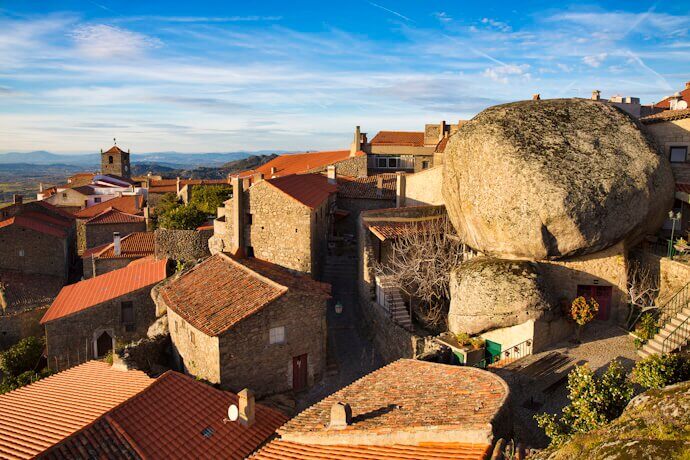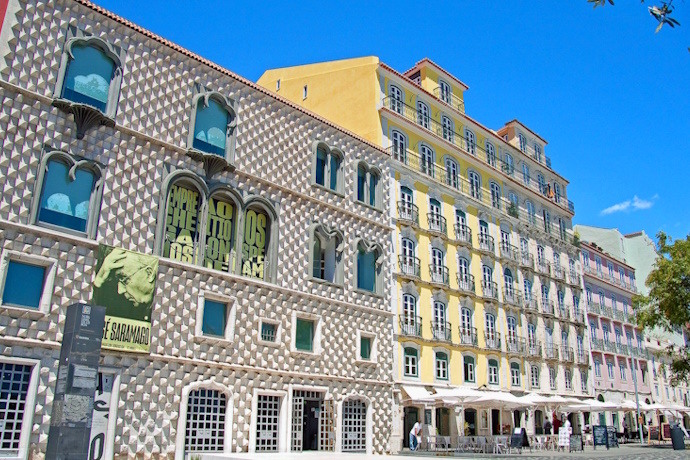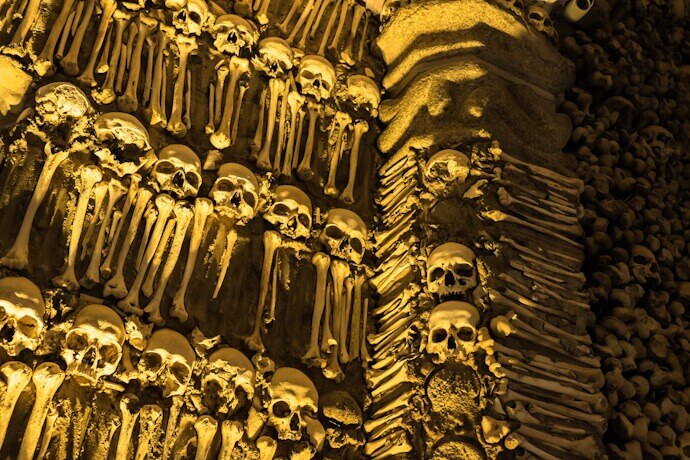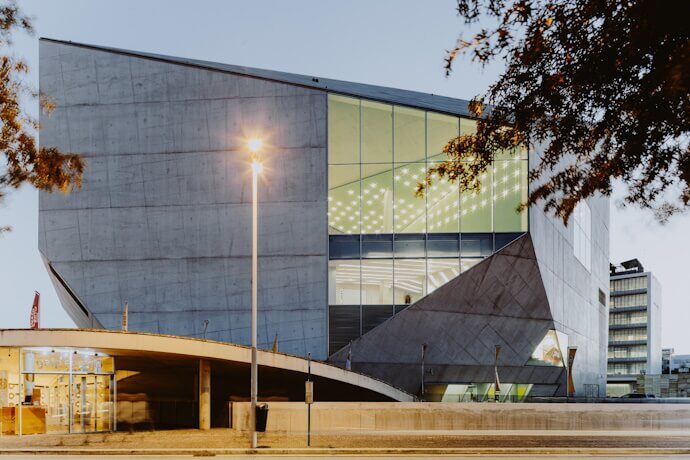Portugal is a country where history and modernity blend seamlessly, providing a rich tapestry of cultural experiences and architectural wonders. And to prove so, today we want to share with you five uniquely quirky buildings that serve as focal points for exploring the diverse regions in which they are located. Whether it be Cascais, Évora or Monsanto, each of these architectural gems not only enchants with its distinctive design but also opens a window into the local culture, history and attractions of their respective regions.
What are you waiting for? Prepare your bags and come see Portugal's diverse regions through a new lens! Let its quaint monuments guide you through the heart and soul of this surprising country.
1. Stone House, Monsanto
We are going to start with the Stone House, or Casa do Penedo, an architectural marvel that completely camouflages with the surrounding landscape. Located within the truly picturesque village of Monsanto, this stone abode was built between massive boulders and appears almost like a natural formation, making it an intriguing sight for visitors.
This historically rich village within the central region of Portugal is often referred to as the "most Portuguese village in Portugal" - Monsanto is renowned for its well-preserved medieval architecture, narrow winding streets, and stunning panoramic views of the surrounding landscape. The village's houses are intricately woven around and between massive granite boulders, creating a unique and timeless aesthetic.
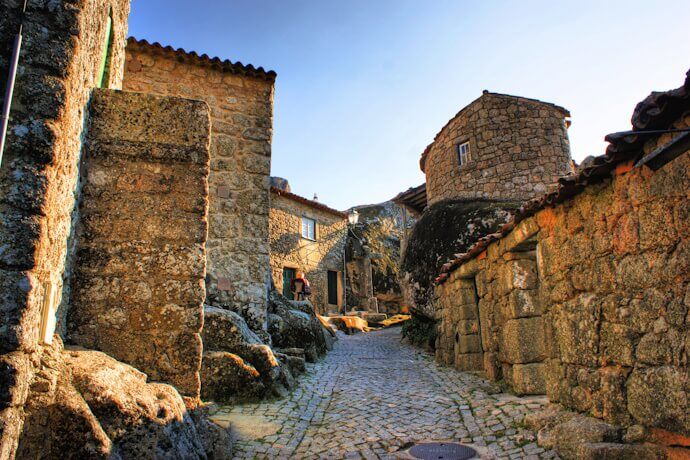
During your visit, climbing up to the Castle of Monsanto is a must! You will be rewarded with panoramic vistas of the rugged landscape and the village below. The castle itself, although in ruins, provides a glimpse into the region’s medieval past. The surrounding region of Monsanto is a haven for nature lovers. Numerous hiking trails wind through the scenic countryside, offering opportunities to explore the diverse flora and fauna of the area.
2. Casa dos Bicos, Lisbon
Arriving in Lisbon, you should visit the Casa dos Bicos, or the House of the Spikes, located in the Alfama district. This architectural gem, built in 1523, has a façade adorned with a unique pattern of diamond-shaped stones, giving the building its name and setting it apart from the surrounding structures. Despite suffering significant damage during the 1755 Lisbon earthquake, the house has been meticulously restored and now serves as a cultural centre.
Steeped in history and culture and known for its warm, sunny climate and gorgeous landscapes, Lisbon is a top destination for travelers seeking a mix of old-world charm and modern amenities. You can find historical gems, like the medieval castle perched atop one of Lisbon’s seven hills, appreciate the views over the city and the Tagus River from one of its many viewpoints, and travel in one of the trams and elevators.
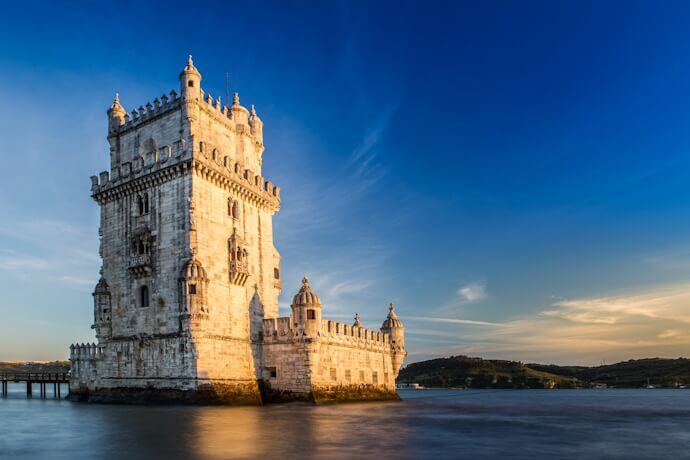
Head to the Belém quarter and delight yourself with one (or two!) Pastel de Belém, the delicious custard tart that is internationally famous! In this neighborhood, historic monuments, like the Belém Tower or the Jerónimos Monastery, blend with the contemporary MAAT Museum and the industrial feel of LX Factory.
On a more nostalgic note, attend a Fado concert, the soulful and melancholic genre of music that reflects the Portuguese spirit. Being Lisbon the birthplace of Fado, you can find live performances in various venues throughout the city, particularly in Alfama and Bairro Alto.
3. Casa das Histórias de Paula Rego, Cascais
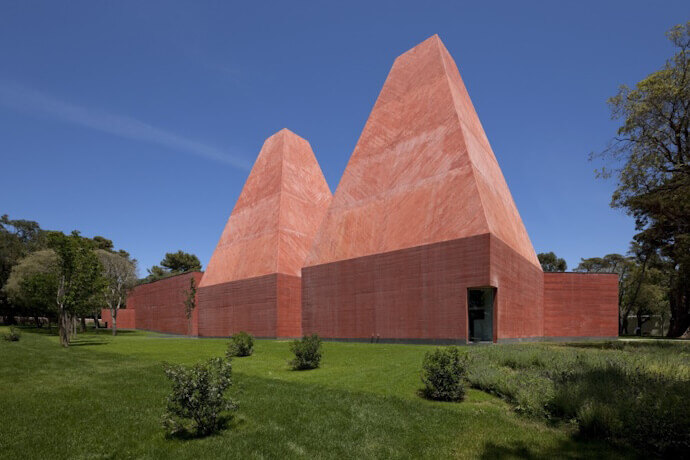
Another curious Portuguese building is the Casa das Histórias de Paula Rego, in Cascais. This museum is dedicated to the life and work of Paula Rego, one of the country’s most celebrated contemporary artists. Known for its striking architecture characterized by two pyramid-like towers and red concrete walls, the museum houses a vast collection of Rego’s paintings, drawings, and prints, providing an in-depth look at her artistic journey.
If you are staying in Lisbon or Sintra, a detour to Cascais should be mandatory! Cascais is an alluring coastal town known for its stunning beaches, historic sites, and cultural scene. Once a quiet fishing village, it has transformed into a cosmopolitan destination that retains its traditional charm with a luxurious touch.
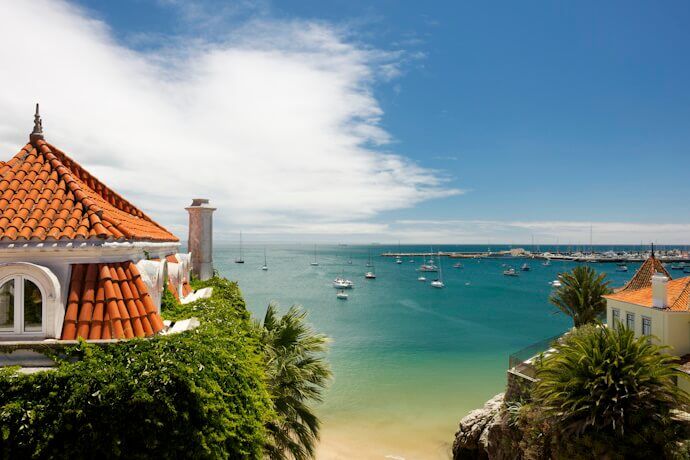
Put on comfortable shoes, because the town itself has numerous sites to explore. The Cascais Citadel, close to the bay, is a historic fortress complex that now houses a luxury hotel and an art centre. If you walk a little bit further, you will get to the Marina, a bustling hub of activity with upscale restaurants, chic boutiques, and vibrant nightlife. In front, you find the Marechal Carmona Park, a beautifully manicured garden perfect for a relaxing afternoon.
4. Bone Chapel, Évora
Now, let’s put a different spin on things and talk about a more eerie attraction that we know you will love - The Bone Chapel (Capela dos Ossos)! This is one of Évora's most intriguing and macabre landmarks. Located within the Church of St. Francis, this 16th-century chapel is renowned for its interior walls and pillars, adorned with the bones and skulls of approximately 5,000 monks. The chapel was created by Franciscan monks to encourage reflection on the transience of life.
Of course, this spectacular chapel is only one of many interesting monuments you can see in Évora, since this city is a UNESCO World Heritage site known for its well-preserved medieval architecture and rich historical heritage. While exploring the historic centre, you will pass by the Roman Temple, which dates back to the 1st century AD.
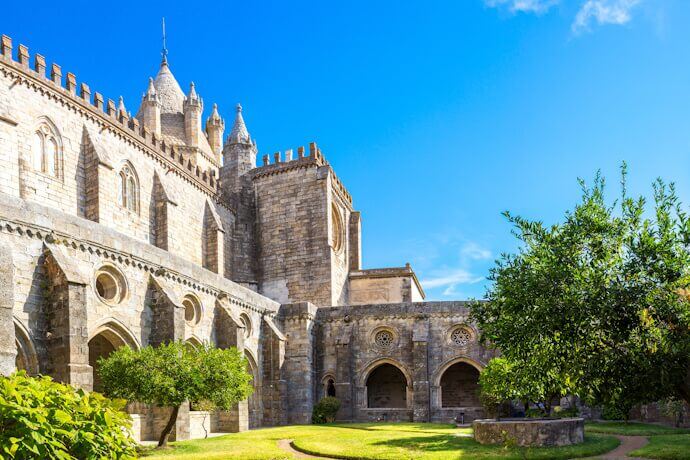
Another must-visit attraction is the Évora Cathedral, a massive Gothic structure built between the 13th and 14th centuries that offers stunning views of the city from its rooftop. As if this wasn’t impressive enough, you can find a megalithic complex dating back to the 6th millennium BC just a short drive from Évora! This ancient stone circle is called the Almendres Cromlech and is one of the largest in the Iberian Peninsula.
Évora is a tapestry of historical eras, showcasing a blend of Roman, Gothic, Manueline and Baroque styles. Its compact size makes it an ideal destination for exploring on foot, allowing you to fully immerse yourself in its historical and cultural ambiance!
5. Casa da Música, Porto
Casa da Música (House of Music), located in Porto, is a striking and innovative concert hall known for its bold architecture and exceptional acoustics. Designed by the renowned Dutch architect Rem Koolhaas, the building was completed in 2005 and has since become an iconic symbol of modern Porto. The building’s unconventional, asymmetrical design features a stark white exterior and large, irregularly shaped windows that allow natural light to flood the interior spaces.
Porto is famous for its historic centre, rich cultural heritage, and its namesake port wine. Situated along the Douro River, Porto's landscape is marked by steep, narrow streets, alluring riverside views, and a blend of medieval and modern architecture. The city is also a UNESCO World Heritage site, celebrated for its well-preserved historic buildings and vibrant urban life.
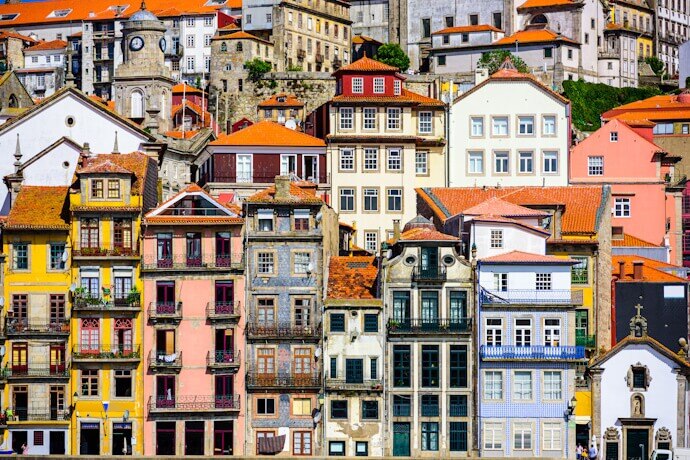
The historic Ribeira district is one of Porto's most charming areas, home to numerous cafes, restaurants, and bars. Cross the Dom Luís I Bridge, which connects Porto with Vila Nova de Gaia, where you find the illustrious Port wine cellars! Porto is synonymous with port wine and a visit to its historic cellars gives insight into the craftsmanship and the tradition that has made Porto a key player in the global wine industry.
Porto’s culinary scene is rich and diverse. The city is known for its traditional dishes, like "francesinha" (a hearty sandwich with layers of meat, covered in melted cheese and a spicy beer sauce). If you prefer to do it yourself, head to Mercado do Bolhão, a bustling market where you can buy local produce, meats, cheeses and pastries!
A journey through history and culture
Portugal is a treasure trove of architectural marvels and cultural experiences, each offering a unique glimpse into the country's rich heritage and contemporary creativity. That is why we encourage you to embark on a journey to these remarkable places. Each of these sites offers more than just visual appeal—they are gateways to exploring the local culture, history, and natural beauty of their respective regions. Contact us to help you realize the dream of finding that Portugal's architectural gems are deeply intertwined with the vibrant life and history of the country.


